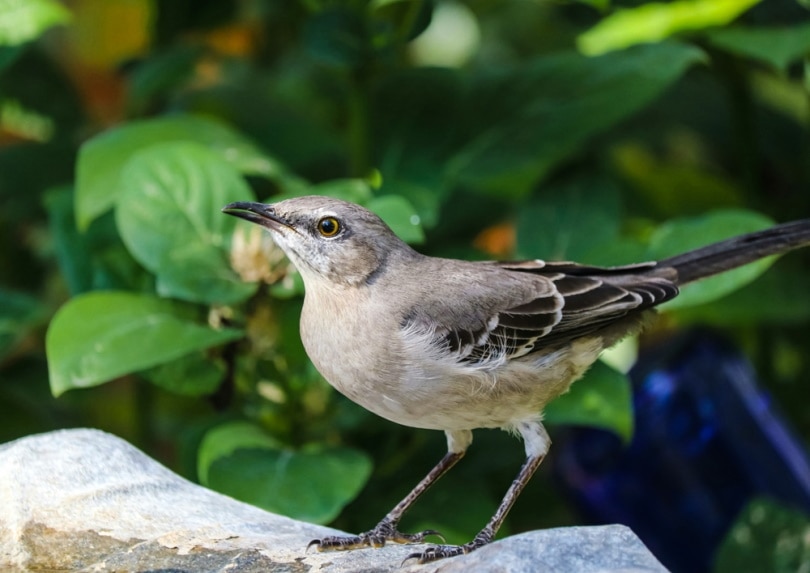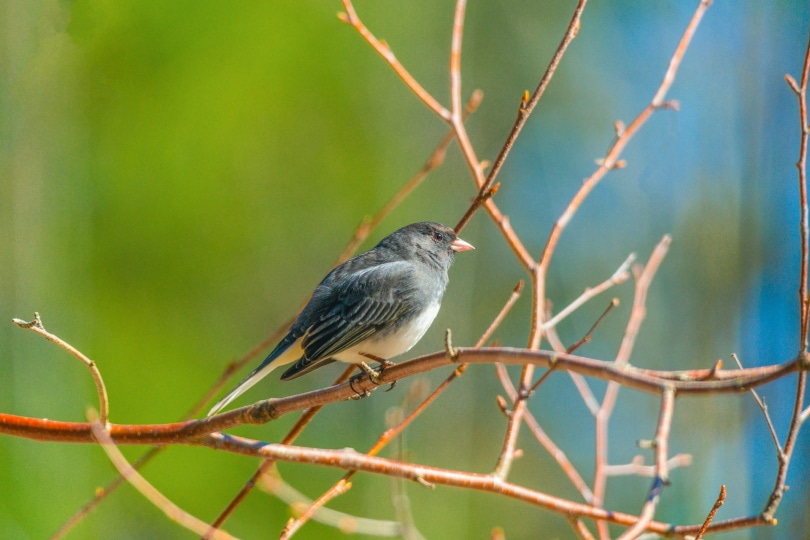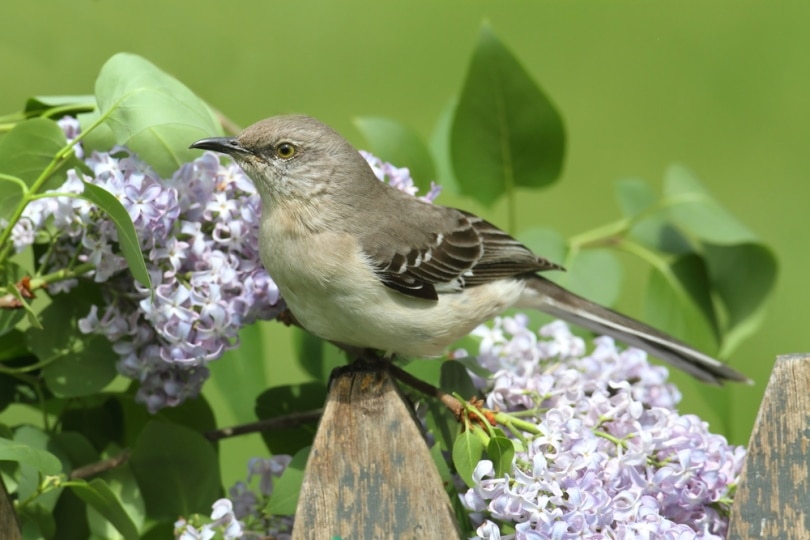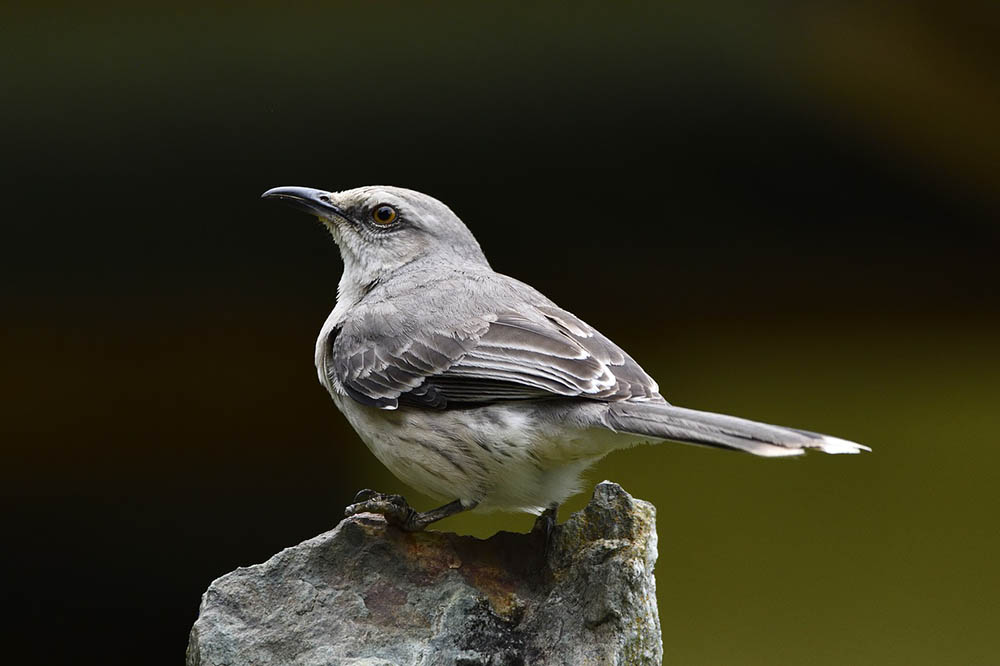What Is Texas’ State Bird? How Was It Decided?
Last Updated on

Every state in the US has a legislature, and part of their responsibility is to decide which animal will act as the state symbol. In Texas, the Northern Mockingbird is the state symbol. Members of the 40th legislature sat down, had a discussion, and concluded that this bird exuded qualities that resonated best with Texans.
Of all the qualities examined, loyalty was the one trait that stood out. This medium-sized bird stuck with Texans through the freezing cold winters and hot summers, even when other animals migrated south to search for better pastures.
The legislature also loved how protective the bird was over its territory. And they were right because this species doesn’t mess around with anything or anyone trying to invade its personal space. In fact, on more than one occasion, it’s been spotted going toe to toe with cats and sometimes dogs that didn’t know better.

When did Texas decide the Northern Mockingbird should be the state bird?
First off, it’s important to note that the Northern Mockingbird is a common species in Texas. We’ve learned that its prime habitats are open areas and forest edges. They like spending their time foraging for berries or insects.
Even though Texas became a state on the 29th day of December in 1845, it never had a state symbol until 1927.
Nobody really knows why that is, considering almost everyone in the state revered this species. It was held with such high regard that Richard Milburn—a famous musician at the time—composed a song that became an instant hit. The song was titled “Listen to the Mockingbird,” and it was dedicated to his sweet wife who had just passed at the time.
Some believe that the declaration of the Northern Mockingbird as the state bird took a while because four other states were already considering it as an option. Those states include Tennessee, Mississippi, Florida, and Arkansas.
We don’t know how true those rumors are, but we know this; people were starting to get impatient, as there was no other bird or animal that had qualities comparable to what the Northern Mockingbird was offering. Lobbying started in 1920, and those who were most vocal at the time were the women who were proud members of the Texas Federation of Women’s Club.
In retrospect, states usually don’t like sharing their state symbols with other states. However, not even that could stop the push which was growing stronger by the day. Governor Dan Moody knew he had no other choice but to give the people what the people wanted. And on the 31st day of January 1927, the Northern Mockingbird joined the shortlist of state symbols in the country.
In case you’re wondering, the four other states that were still weighing their options also compelled their respective governors to approve the legislation naming, after Texas.

What are the descriptive features of the Northern Mockingbird?
The mockingbird species is sexually dimorphic to some degree, in the sense that the males are typically larger than their counterparts—not too much larger, though. Their colorations are relatively similar.
Their bellies are often whitish-gray, and their upper chest is dark gray. Their bills are black, with a small shade of brown at the base. With regards to weight, they’ll never be more than 2 ounces or much less than 1.4. And if you measure head to tail most of them fall between 8 and 11 inches.
Mockingbirds in the wild will usually live around 8 years. In captivity, though, they’ll often live up to 20 years.
Why is the Mockingbird so special?
Did you know the “Mockingjay” was inspired by the Mockingbird? Of course, diehard fans of the Hunger Games know exactly what we’re talking about. And if you love reading novels you must have read the “To Kill a Mockingbird” bestseller.
The point is, the Mockingbird has been part and parcel of different generations, and something tells us that that’s not going to change anytime soon—especially now that it’s inextricably woven into American pop culture.
These are some of the fascinating facts that make the Mockingbird a special kind of creature:

- It has white patches that serve dual purposes. If you see it flash them, it’s either trying to ward off a predator, or working on its mating rituals.
- This species is known to be a prolific breeder. You can’t tell how many eggs it’s going to lay in a single breeding season because it all depends on the individual bird. But according to records, the maximum number of eggs ever laid in one season is 27.
- Unlike most wild birds, the Mockingbird can easily adapt to any environment. That’s one of the reasons why their population never dwindled when humans started invading their habitats.
- The Northern Mockingbird has a remarkable vocal talent. They are so good that people started capturing and trading them illegally in the 19th century. That venture was highly lucrative seeing as some of the best singers would fetch up to $50. If we had to equate that to today’s currency value it would be about $1200.
- Mimus Polyglottos is what we call the bird in Latin. Look for a translator and they’ll tell you it means ‘many-tongued mimic.’ As in, someone or something that has the ability to speak or say things in more than one language. And that’s what the bird does. It can mimic any sound in its immediate surroundings, including man-made noises, and the calls of other bird species. Some studies even suggest that the Northern Mockingbird can imitate different toad and frog species.
- In total, there are 16 different subspecies of the Mockingbird. Unfortunately, only one is considered a US native, and that’s the Northern Mockingbird. If you spot a different subspecies, it will either be the Bahama Mockingbird or the Blue Mockingbird. They sometimes come to visit, as they have built homes in nearby countries. The former is an island native, while the latter resides in Mexico.

Frequently Asked Questions
Are Northern Mockingbirds rare?
As per the records obtained from the International Union for Conservation of Nature, our singing friends have been listed under the “Least Concern” category. When an animal or bird species gets listed as least concern, that would mean the experts have assessed their situation and concluded that they are currently thriving, and have a population status that’s not threatened.
The truth is, we don’t know the exact number of the Northern Mockingbirds in the world. However, if we had to work with estimates, we would say they are about 45,000,000 in total.
What’s the Northern Mockingbird notorious for?
Singing and mimicking different birds, animals, and human noises. They are so good that scientists took an interest and began studying them. In the end, they concluded that they only do so to show off to their potential mates.

Is the Mockingbird a sign of good luck?
We don’t know about luck, but some communities believe the Mockingbird symbolizes self-expression. They think people who are frequently visited by Mockingbirds don’t usually express themselves to the best of their abilities. So, if you’re a superstitious person, and you’ve been seeing a lot of them lately, this could be why.
How aggressive are Northern Mockingbirds?
The Northern Mockingbird is a fairly aggressive species. They won’t attack humans unless they feel threatened, but if they spot your cat or dog, they’ll attack without thinking twice. And they are also aggressive towards each other. On occasion, females will attack other females and the males will attack other males for seemingly no reason at all. It’s the reason why you’ll rarely find a male or female fly or land near the territory of another Mockingbird.
Are Northern Mockingbirds nocturnal?
The species is a lot active during the day but loves singing into the night. They’ll just sing, and not forage for food or hunt insects. We learned from ornithologists that a good number of those who’ll still be singing at that time are the ones who weren’t fortunate enough to score a mate. They’ll keep on singing, hoping to attract a mate.

What can you feed the Northern Mockingbird?
Northern Mockingbirds love foraging for fruits, insects, and suet. But that also depends on what time of the year it is. They mostly feed on insects during winter and seeds in the summer.
So, if you’re thinking of luring one to your backyard, you should serve one of the above. Just don’t forget the fact that they are extremely aggressive—they’ll chase away any bird species in close proximity.

Conclusion
Every state has a state symbol, and that symbol has a story behind it. We don’t just choose a random bird out of the blue and decide that’s what will represent us. The people have to be consulted, and a procedure has to be followed. Texans fell in love with the Northern Mockingbird because the species never deserted them during those hard times.
Featured Image Credit By Thushanth Pakkiyaraja, Shutterstock
About the Author Robert Sparks
Robert’s obsession with all things optical started early in life, when his optician father would bring home prototypes for Robert to play with. Nowadays, Robert is dedicated to helping others find the right optics for their needs. His hobbies include astronomy, astrophysics, and model building. Originally from Newark, NJ, he resides in Santa Fe, New Mexico, where the nighttime skies are filled with glittering stars.
Related Articles:
What Is the Best Binocular Magnification for Hunting? Optical Features Explained
10 Types of Hummingbirds in Arkansas (With Pictures)
8 Types of Hummingbirds in Nebraska (With Pictures)
5 Types of Hummingbirds in Idaho (With Pictures)
3 Types of Hummingbirds in Mississippi (With Pictures)
8 Types of Hummingbirds in Kansas (With Pictures)
5 Types of Hummingbirds in West Virginia (With Pictures)
5 Types of Hummingbirds in Ohio (With Pictures)
